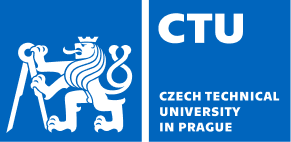About this course
The subject deals with the following topics - the concept of design and its definition, basic concepts of design theory, design classification, function of design. Design as a science, design process, design approaches, design methods. Design analysis. Design and marketing, brand policy. Perspective view, geometric forms, problems of shape perception and composition. Ergonomics - definitions, terms. The role and place of ergonomics in design. Ergonomics in the workplace. Human (patient) - its physical characteristics, dimensions, human body, sensations and perceptions, reflexes, human psychological characteristics, interpersonal relationships, voluntary act, motivation, efficiency, work organization. Handicap. Human and medical product. Aids, instruments and tools. Climate conditions. Lighting. Noise. Vibration and shock. Safety. Interior of medical facility (color, lighting, materials). Universal design / Design for all, 7 basic principles. Design of medical devices, principles of design in healthcare.
Learning outcomes
The subject deals with the following topics - the concept of design and its definition, basic concepts of design theory, design classification, function of design. Design as a science, design process, design approaches, design methods. Design analysis. Design and marketing, brand policy. Perspective view, geometric forms, problems of shape perception and composition. Ergonomics - definitions, terms. The role and place of ergonomics in design. Ergonomics in the workplace. Human (patient) - its physical characteristics, dimensions, human body, sensations and perceptions, reflexes, human psychological characteristics, interpersonal relationships, voluntary act, motivation, efficiency, work organization. Handicap. Human and medical product. Aids, instruments and tools. Climate conditions. Lighting. Noise. Vibration and shock. Safety. Interior of medical facility (color, lighting, materials). Universal design / Design for all, 7 basic principles. Design of medical devices, principles of design in healthcare.
Course requirements
Requirements for awarding credit: presentation, defense and submission of a project (complex structural design) focused on medical technology or equipment, processed in the SolidWorks environment. The structure will consist of at least 5 parts and several moving links. Theses will be handed in by the deadline specified in the first exercise. One absence from practice is allowed without compensation.
Resources
- Mandatory::
- 1. DEMARCO, Carl T. Medical device design and regulation. Milwaukee: ASQ Quality Press, ©2011. xxxv, 328 s. ISBN 9780873898164.
- 2. STANTON, Neville. Human factors methods: a practical guide for engineering and design. 2nd ed. Burlington: Ashgate, c2013. ISBN 978-1-4094-5754-1.
- 3. HOWARD, William E. a Joseph C. MUSTO. Introduction to solid modeling using SolidWorks 2011. New York: McGraw - Hill, c2011. ISBN 978-0-07-337545-8.
- Recommended:
- 1. Handbook of human factors and ergonomics in health care and patient safety. 2nd ed. Editor Pascale CARAYON. Boca Raton, FL: CRC Press, c2012. Human factors and ergonomics. ISBN 978-1-4398-3034-5.
- 2. SALVENDY, Gavriel. Handbook of human factors and ergonomics. 4th ed. Hoboken: Wiley, c2012. ISBN 978-0-470-52838-9.
Activities
exercises
Additional information
- Coordinating facultyCzech Technical University in Prague
- Contact a coordinator
- CreditsECTS 4
- Contact hours per week4
- Instructorsdoc. Ing. Piorecký Marek Ph.D., Ing. Štrobl Jan Ph.D., Ing. Piorecká Václava Ph.D., Ing. Černý Filip
- Mode of instructionHybrid
Offering(s)
Start date
17 February 2025
- Ends21 September 2025
- Term *Summer 2024/2025
- Instruction languageEnglish
- Register between24 Oct - 29 Nov 2024
Only 7 days to enrolApply now
